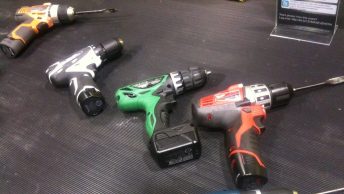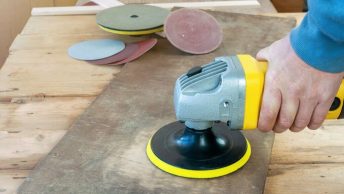Brush and brushless motors are two electric motors commonly used in various applications, such as power tools, drones, and vehicles. Both of these motors have unique advantages and disadvantages regarding performance, efficiency, and cost.
In this article, we will take a closer look at the differences between brush and brushless motors.
Brushed Motors
A brushed motor is a type of electric motor that uses brushes to conduct electricity to the rotating armature.
The brushes are typically made of carbon and are in constant contact with the commutator, which is connected to the armature.
This allows the current to flow from the power source to the armature, causing it to rotate and power the motor.
Advantages
Lifetime:
- Brushed motors have a simple design, resulting in a longer lifetime compared to other motors.
- They also have fewer moving parts, reducing the chances of mechanical failure.
Cost:
- Brushed motors are generally cheaper to manufacture and purchase, making them more affordable for consumers.
Ease of Control:
- Brushes’ conductivity allows for easy motor speed control, making it suitable for applications that require variable speeds.
- The simplicity of its design also allows for easier maintenance and repairs.
Disadvantages

- The constant contact between the brushes and the commutator causes friction, resulting in wear and tear over time.
- This can lead to a decrease in performance and efficiency and the need for frequent replacements of worn-out brushes.
Must Check: Skill Saw vs Circular Saw
Brushless Motors
On the other hand, a brushless motor does not have any physical brushes or commutator.
Instead, it uses a series of electronic switches to control current flow to the stator windings. This technology is known as an Electronic Speed Controller (ESC).
Advantages
Efficiency:
- Brushless motors are more efficient than brushed motors due to the absence of physical contact between moving parts.
- This results in less energy loss and a longer runtime for battery-operated applications.
Power:
- The electronic speed control allows for precise and powerful performance, making brushless motors suitable for high-performance applications such as drones and electric vehicles.
Durability:
- The absence of brushes also means no friction or wear and tear, resulting in a longer lifespan than brushed motors.
Disadvantages

- Brushless motors tend to be more expensive due to the complex technology used in their design and production.
- They also require specific electronic speed controllers, adding to the overall cost of using brushless motors.
Difference Between Brushed and Brushless Motors?
| Characteristic | Brushed Motors | Brushless Motors |
| Commutation Method | Mechanical brushes and commutator | Electronic controller (ESC) |
| Brush Wear | Brushes wear out over time | No brushes, minimal wear |
| Efficiency | Lower efficiency due to brush friction | Higher efficiency |
| Maintenance | Requires regular brush replacement | Virtually maintenance-free |
| Heat Generation | Generates more heat | Generates less heat |
| Lifespan | Typically shorter lifespan | Longer lifespan |
| Size and Weight | Generally larger and heavier | Smaller and lighter |
| Control Complexity | Simpler control circuitry | More complex control circuitry |
| Cost | Usually less expensive | Generally more expensive |
| Noise | Tends to be noisier | Quieter operation |
| Speed and Torque Control | Limited control options | Precise control options |
| Power Efficiency | Less power-efficient at low speeds | More power-efficient at all speeds |
| Applications | Common in simple, low-cost applications | Used in high-performance, precision applications |
| Examples | Household appliances, power tools | Drones, RC vehicles, industrial machinery |
How Does it Work?
Brushed motors :
- The brushes and commutator allow electricity to flow to the rotating armature.
- This causes the armature to rotate, powering the motor.
- The conductivity of brushes allows for easy speed control of the motor.
- Maintenance involves replacing worn-out brushes.
Brushless motors :
- Electronic switches control the flow of current to the stator windings.
- This creates a rotating magnetic field that powers the motor.
- The electronic speed control allows for precise and powerful performance.
- No physical contact between moving parts results in less wear and tear.
- Maintenance involves checking the electronic speed controller and replacing it if necessary.
Factors Considered When Choosing Motors?
When choosing between a brushed and brushless motor, it is important to consider the specific requirements of your application. Some factors to consider are:

- Cost: If budget is a concern, a brushed motor may be more affordable.
- Power: For high-performance applications such as drones or electric vehicles, brushless motors would be the better choice due to their higher power output.
- Efficiency: A brushless motor would be the better option if efficiency and longer runtime are important.
- Durability: A brushless motor’s durability may be more suitable for heavy-duty applications or those requiring frequent use.
Must Check: Orbital Sander vs Sheet Sander
Conclusion
Both brush and brushless motors have their advantages and disadvantages. It is important to consider the specific needs of your application when choosing between these two types of motors.
Brushed motors are more affordable and suitable for applications that require variable speeds, while brushless motors offer higher efficiency, power, and durability at a higher cost.
Regardless of which motor you choose, proper maintenance and care can extend its lifespan and ensure optimal performance.
So, choose wisely based on your specific requirements and budget. So that it can serve you for a longer period




